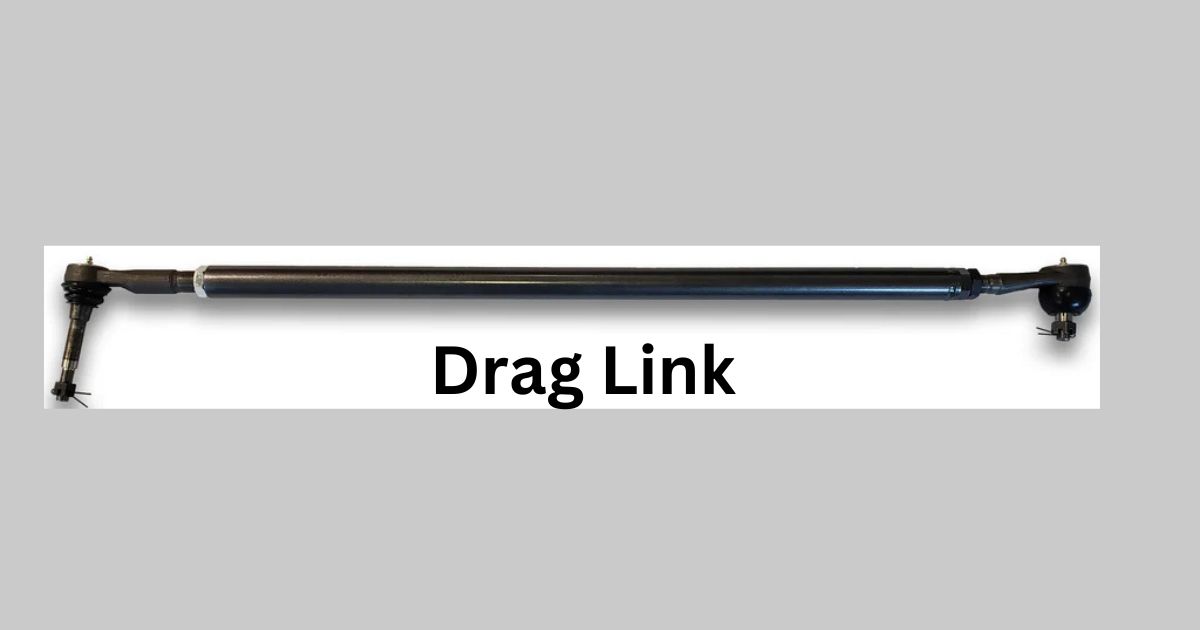The drag link is a vital part of a vehicle’s steering system, especially in trucks, SUVs, and off-road vehicles. It plays a key role in converting the driver’s steering wheel movements into the motion that turns the wheels. In this article, we’ll explore what a drag link is, how it works, and why it’s essential for safe and effective vehicle operation.
What is a Drag Link?
A drag link is a mechanical component found in the steering system of many vehicles, particularly those using a recirculating ball-type steering mechanism. It connects the pitman arm (attached to the steering gearbox) to the steering arm or tie rod. Its primary job is to transmit the steering motion from the steering gearbox to the front wheels, allowing them to turn left or right in response to the steering wheel.
How Does a Drag Link Work?
In simple terms, when the driver turns the steering wheel, the pitman arm moves, which then pulls or pushes the drag link. This movement is transmitted to the tie rod or steering knuckle, which ultimately causes the front wheels to turn. The drag link effectively “drags” the wheels in the direction the driver wants to go, making it a crucial component for steering control.
Key Parts of a Drag Link
A typical drag link consists of several important components:
Pitman Arm Connection: The point where the drag link attaches to the steering gearbox, which initiates movement.
Tie Rod or Steering Knuckle Connection: The opposite end connects to the steering system, which controls wheel direction.
Ball Joints or Bushings: These allow smooth pivoting and movement, reducing friction and wear.
Types of Drag Links
There are two primary types of drag links used in different vehicles:
Solid Drag Link: A sturdy, non-adjustable version often found in heavy trucks and vehicles requiring robust steering components.
Adjustable Drag Link: This type allows for alignment adjustments, ensuring precise steering and reduced tire wear.
Common Symptoms of a Failing Drag Link
Like any mechanical part, a drag link can wear out or become damaged over time. Common symptoms of a failing drag link include:
Loose or Unresponsive Steering: If the steering feels loose, the drag link may be worn or damaged.
Steering Wheel Misalignment: The steering wheel may not return to the center after making a turn.
Vibrations in the Steering System: You may feel vibrations, especially when driving at higher speeds.
Difficulty Turning: If the drag link is damaged, you might experience stiffness or difficulty when trying to turn the vehicle.
Importance of Regular Maintenance
Regular inspection and maintenance of the drag lin,k are crucial for safe driving. A damaged or worn drag lin,k can lead to poor steering response, putting you and others on the road at risk. It’s recommended to check the drag lin,k during routine vehicle alignment and if any steering issues are noticed.
Steps to Replace a Drag Link
Replacing a drag link, if worn out or damaged, involves several key steps:
Lift the Vehicle: The vehicle must be lifted safely to access the steering components.
Remove the Old Drag Lin,k: The damaged or worn drag lin,k is removed from the pitman arm and tie rod connections.
Install the New Drag Lin,k: A new drag lin,k is installed and adjusted for proper fit and alignment.
Test the Steering System: After installation, a test is conducted to ensure proper steering function, followed by a wheel alignment check.
Safety and Functionality
Ensuring that the drag lin,k is in good working order is critical for maintaining a safe and functional vehicle. A poorly functioning drag lin,k can lead to unpredictable steering, which may result in dangerous driving conditions. Regular inspections and timely replacements of worn parts are vital to avoid any steering-related accidents.
Why Alignment is Critical After Replacing a Drag Lin,k
After installing a new drag lin,k, it’s essential to have the vehicle’s alignment checked. This step ensures that the wheels are properly aligned with the steering system, preventing issues such as uneven tire wear and poor steering control. A well-aligned vehicle will respond more precisely to steering inputs, improving overall handling and safety.
Conclusion
The drag lin,k plays an indispensable role in your vehicle’s steering system, translating your steering wheel movements into the motion needed to turn the wheels. A worn or damaged drag lin,k can severely affect steering performance, making regular inspections and timely replacements crucial for safe driving. By maintaining this critical component, you ensure your vehicle remains responsive, safe, and reliable on the road.
FAQs
What does a drag lin,k do in a vehicle’s steering system?
A drag lin,k connects the steering gearbox to the steering arm or tie rod, transmitting the motion needed to turn the vehicle’s wheels.
How do I know if my drag lin,k is failing?
Common signs include loose or unresponsive steering, the steering wheel not centering after turns, vibrations in the steering system, and difficulty turning the vehicle.
Can I drive with a damaged drag lin,k?
Driving with a damaged drag lin,k can be dangerous, as it impairs the vehicle’s ability to steer correctly. It’s essential to get it checked and replaced if needed.
What is the difference between a solid and an adjustable drag lin,k?
A solid drag lin,k is sturdy and non-adjustable, typically used in heavy-duty vehicles, while an adjustable drag lin,k can be fine-tuned to improve alignment and steering precision.
How often should a drag lin,k be inspected?
It’s recommended to inspect the drag lin,k during regular vehicle maintenance or whenever you notice any issues with steering performance, such as looseness or misalignment.
